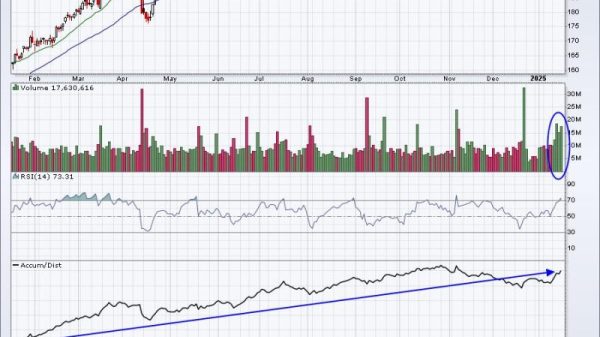To those gathering over the centuries at Stonehenge — the imposing prehistoric monument that has dominated Salisbury plain in southwest England for some 4,500 years — it was likely clear how the sun could have informed its design.
The central axis of the stone circle was, and still is, aligned with the sunrise at midsummer and sunset at midwinter, the stones dramatically framing the rising and setting sun when days were at their longest and shortest.
But do Stonehenge and potentially other megalithic monuments around the world also align with the moon?
The idea that Stonehenge was linked in some way to the moon gained ground in the 1960s. However, the concept hadn’t been systematically explored, said Clive Ruggles, professor emeritus of archaeoastronomy in the school of archaeology and ancient history at the University of Leicester.
This summer, archaeologists are using a little-known lunar phenomenon that happens every 18.6 years to investigate as part of their work in understanding why Stonehenge was built.
Lunar standstill
Like the sun, the moon rises in the east and set in the west. However, moonrise and moonset move from north to south and back again in the space of a month. The northern and southern extremes also change over a period of about 18 and a half years. The lunar standstill is when the northernmost and southernmost moonrise and moonset are farthest apart.
“The moon rise changes every day and if you track this for a month you’d notice there is a northern and a southern limit beyond which the moon never rises (or sets),” said Fabio Silva, senior lecturer in archaeological modeling at Bournemouth University via email.
“If you were to look at these limits over 19 years you’d notice them change like an accordion: they expand up to a maximum limit (the major lunar standstill) and then start contracting up to a minimum limit (the minor lunar standstill).”
This major lunar standstill is due to happen in January 2025, but from now until mid-2025, the moon may appear, to a casual observer, to be unusually low and high in the night sky during the lunar month.
“If you’re in one of those 19 years, then from time to time, you will see the moon rising or setting much further north or south than it does most times. In the years in between you never see it there,” Ruggles said.
Despite the phenomenon’s name, the moon isn’t actually standing still during this period, he said.
“What is standing still is these limits, and the moment of that happening is in January next year,” Ruggles added. “But for about a year either side, if you happen to catch the moon rise at the right time, you’re going to see the moon rising exceptionally low (in the sky).”
Stonehenge is made of two types of stone: larger sarsen stones and smaller bluestones that form two concentric circles. Ruggles said that Stonehenge’s station stones, which form a rectangle around the circle, roughly align with the moon’s extreme positions during the lunar standstill.
How this lunar alignment was achieved, whether it was by design and its potential purpose are topics of debate that the team wants to investigate.
Probing Stonehenge’s celestial connections
While there are no written documents that shed light on Stonehenge’s meaning and significance, archaeologists have long believed its solar alignments were intentional. Such alignments have been identified in many places around the world and would have been relatively easy for ancient builders to identify, given that knowledge of the sun’s yearly cycle and its connection to the seasons would have been essential to livelihood.
However, it’s much more difficult to say whether Stonehenge really has a connection to the lunar standstill.
“I don’t think we can say definitively, but for me, there are some bits of evidence that made me think that it was deliberate,” Ruggles said.
One clue was the fact that archaeologists have found cremated human remains clustered in the southeast, near where the southernmost moonrise will take place.
“I think there there’s a possibility that they were aware of that direction of the moon and then that became some sort of sacred direction,” Ruggles said.
Since April, Ruggles and Silva, along with colleagues from Bournemouth University, the University of Oxford and English Heritage, the organization that manages the site, have been documenting the moonrise and moonset at key moments when the moon is in alignment with the station stones. The moon was expected to align with the station stone rectangle twice a month from about February 2024 to November 2025, Silva said.
“This will happen at different times of day and night around the year, with the moon being at the right place on different phases each month,” Silva said in a news release in April.
The team wants to understand what patterns of light and shadow the moon creates at Stonehenge and whether they might have held meaning to the people who built and used the monument.
Other monuments with possible lunar link
Stonehenge isn’t the only megalithic monument potentially linked to the lunar standstill.
In the United States, Erica Ellingson, emeritus professor of astrophysics at the University of Colorado Boulder, is investigating lunar alignments at Chimney Rock, a rocky ridge about 1,000 feet above a valley floor in Colorado. The landmark features two large pillar-like rocks that frame the horizon.
Between the years 900 and 1150, ancestors of the Pueblo people built multi-storied buildings and ritual spaces on this difficult-to-access high place, with its dramatic view, Ellington said, and it remains an important site to the 26 Native American groups that have traditional or cultural ties to the area.
“The extraordinary view of the sky between the twin pinnacles suggests an astronomical connection, but the gap is slightly too far north for the Sun to ever shine through it. The Moon, however, can be seen to rise there when it is close to its most extreme northern position, during the major lunar standstill season,” she said via email.
Further evidence of moon-watching comes from tree-ring dating of wooden beams in the nearby ancient buildings, which indicates their construction is linked with the dates of lunar standstills nearly 1,000 years ago, she added.
The Calanais Standing Stones, situated on the Isle of Lewis in Scotland and erected before Stonehenge, may also have a link with the lunar standstill, Ruggles said.
Bradley Schaefer, professor emeritus in the department of physics and astronomy at Louisiana State University, said he was deeply skeptical that ancient people were aware of the lunar standstill and built monuments aligned with it. More likely, he suggested, it was a coincidence.
“Every ancient site has dozens-to-hundreds of potential sightlines, and one-or-more will always point somewhere near to one of the 8 standstill directions,” he said via email.
The lunar standstill is hard for a casual observer of the moon to recognize, he added, and is only really visible in detailed data on observations of the moonrise and moonset.
While the shift in the moon’s position is subtle and historical records documenting the lunar standstill are rare and difficult to interpret, Ellington said she thinks the link is plausible because many ancient people watched the sky very closely.
“A moon-watcher would have seen the moon start to rise or set outside of these limits, moving farther and farther out of bounds as the major lunar standstill approached,” she said.


































